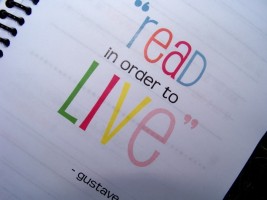Strangers At The Feast by Jennifer Vanderbes
 Book description~ On Thanksgiving Day 2007, as the country teeters on the brink of a recession, three generations of the Olson family gather. Eleanor and Gavin worry about their daughter, a single academic, and her newly adopted Indian child, and about their son, who has been caught in the imploding real-estate bubble. While the Olsons navigate the tensions and secrets that mark their relationships, seventeen-year-old Kijo Jackson and his best friend Spider set out from the nearby housing projects on a mysterious job. A series of tragic events bring these two worlds ever closer, exposing the dangerously thin line between suburban privilege and urban poverty, and culminating in a crime that will change everyone’s life.
Book description~ On Thanksgiving Day 2007, as the country teeters on the brink of a recession, three generations of the Olson family gather. Eleanor and Gavin worry about their daughter, a single academic, and her newly adopted Indian child, and about their son, who has been caught in the imploding real-estate bubble. While the Olsons navigate the tensions and secrets that mark their relationships, seventeen-year-old Kijo Jackson and his best friend Spider set out from the nearby housing projects on a mysterious job. A series of tragic events bring these two worlds ever closer, exposing the dangerously thin line between suburban privilege and urban poverty, and culminating in a crime that will change everyone’s life.
I must first thank Alexis Gargagliano and Wendy Sheanin at Simon & Schuster for sending me a copy of Strangers at the Feast to read and review. From the moment I read the inside book jacket, I couldn’t wait to read this novel, as the autumn weather rolls in and the season of giving thanks draws near.
Race, class, and family are three of the big ideas at the heart of Strangers as the Olson family members observe and learn things about each other around the Thanksgiving Day table they would never have expected….
Through the use of multiple narrators, Strangers is told in what is becoming the most popular writing-style. The story unfolds on Thanksgiving Day in 2007, through each of the Olson family member’s eyes, both in past and present. We are led inside the hearts and minds of both Eleanor and Gavin’s characters, as the Matriarch and Patriarch of the family, but also inside their children’s and spouses hearts and minds. Instead of the typical construction of a novel, where the rising action develops in a ‘steady-little-tug-boat’ type way, in Strangers, as the reader, we are strung along until the very last possible moment and then foiled completely and utterly. I couldn’t turn the pages fast enough and could never have predicted the way the story would unfold. Normally, I would criticize this; instead, Vanderbes does the artful job of burying little ‘Easter Eggs’ for the reader to discover, piquing curiosity enough to keep turning the page along the way.
“At worst, he thought Ginny would overcook the turkey. He’d been prepared, out of sibling loyalty, to drench slices of Ginny’s holiday char in his mother’s gravy and give a heartfelt yum. But he’d counted on stuffing, vegetables, dessert. Was this her plan? Deprive them of football and food and teach them some kind of history lesson? See! This is what Thanksgiving was like for indentured servants in seventeenth- century Virginia!”
If one hadn’t read the book jacket to know there was a catastrophic twist coming, you’d simply read this book thinking this was a nice multigenerational story, written with excellent characterization, about enjoying Thanksgiving and learning about each other’s struggles, many of which are buried quietly and deep under the surface…until you read the bombshell on page 149 ending the chapter with this:
“Denise opened the door, through it would be hard later for Ginny to remember if Denise used her keys. Everyone was talking and carrying things. It would be difficult to say with certainty if the door had been locked.”
Chills ran up and down my spine. I wondered what on earth would happen next. Yet it took another 100+ pages to finally work us up to the peak of the rising action, which was indeed worth the wait!
“As the detective expected, the case got the entire city talking. Diana Velasquez was the reporter who finally realized that five white adults plus two dead, unarmed black kids equaled one major story. Having worked at the paper for a decade, she knew to double-check the police blotter every night in the hopes that the cub reporters missed something. She knew that a shooting in the North End would sell papers. When word got out about the stone knife in Kijo Jackson’s pockets, a Siwanoy Indain relic, Diana dubbed the incident the Thanksgiving Day Massacre. “
Tragedy strikes the Olson Family at a most unlikely time- their Thanksgiving meal, as a result of a previous business decision that rocks the family, neighborhood, and city for years to come.
Intrigued? Pick up Strangers at the Feast; you won’t want to put it down.
This Thanksgiving, what will you be thankful for?
4/5 stars
43 down, 9 left!!!!!!!! In the homestretch. Zzzz
In progress- The Particular Sadness of Lemon Cake (audiobook) and Burnt Toast
xo♥xo,
LibraryLove











Recent Comments